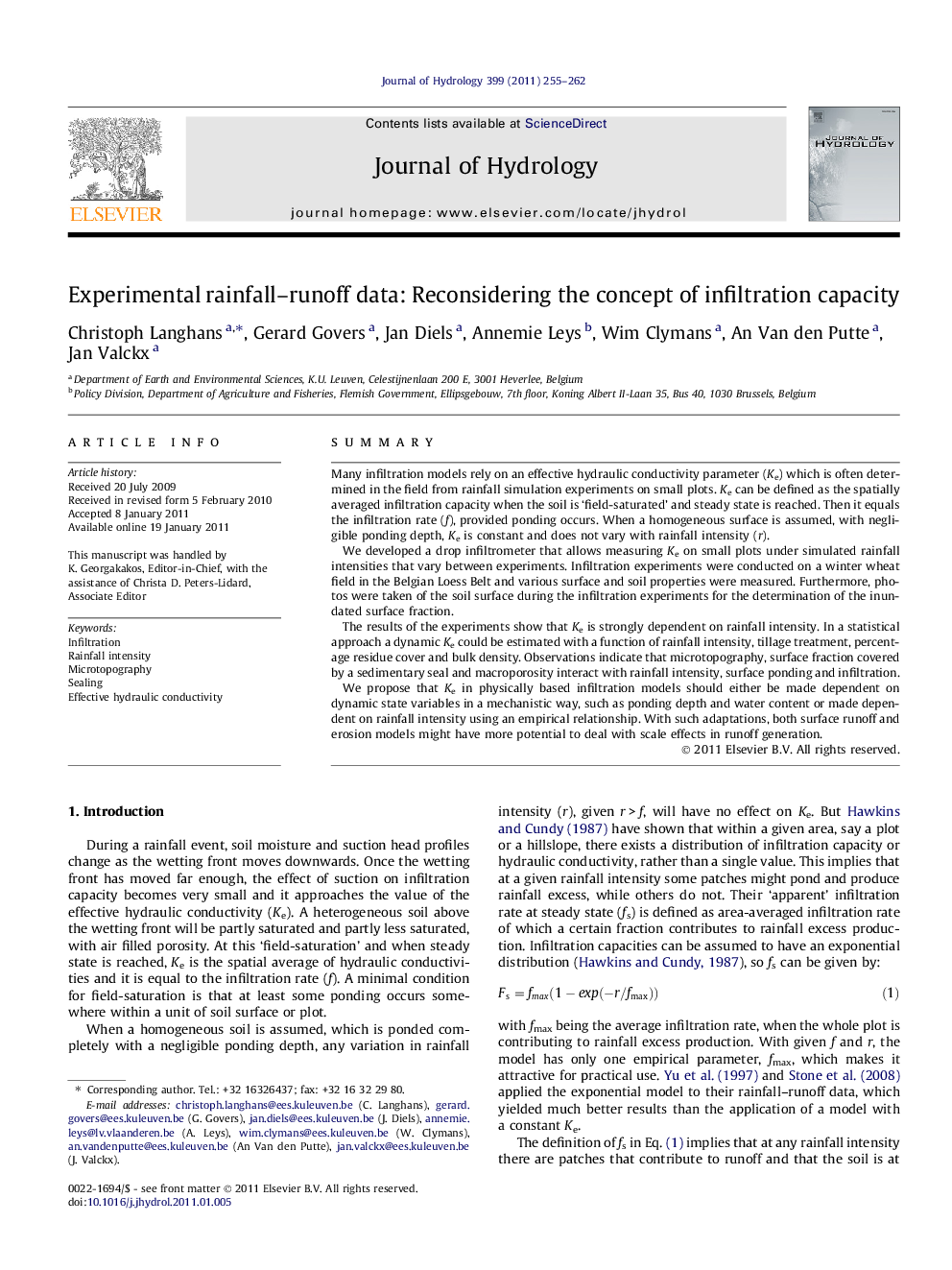| کد مقاله | کد نشریه | سال انتشار | مقاله انگلیسی | نسخه تمام متن |
|---|---|---|---|---|
| 4577814 | 1630029 | 2011 | 8 صفحه PDF | دانلود رایگان |

SummaryMany infiltration models rely on an effective hydraulic conductivity parameter (Ke) which is often determined in the field from rainfall simulation experiments on small plots. Ke can be defined as the spatially averaged infiltration capacity when the soil is ‘field-saturated’ and steady state is reached. Then it equals the infiltration rate (f), provided ponding occurs. When a homogeneous surface is assumed, with negligible ponding depth, Ke is constant and does not vary with rainfall intensity (r).We developed a drop infiltrometer that allows measuring Ke on small plots under simulated rainfall intensities that vary between experiments. Infiltration experiments were conducted on a winter wheat field in the Belgian Loess Belt and various surface and soil properties were measured. Furthermore, photos were taken of the soil surface during the infiltration experiments for the determination of the inundated surface fraction.The results of the experiments show that Ke is strongly dependent on rainfall intensity. In a statistical approach a dynamic Ke could be estimated with a function of rainfall intensity, tillage treatment, percentage residue cover and bulk density. Observations indicate that microtopography, surface fraction covered by a sedimentary seal and macroporosity interact with rainfall intensity, surface ponding and infiltration.We propose that Ke in physically based infiltration models should either be made dependent on dynamic state variables in a mechanistic way, such as ponding depth and water content or made dependent on rainfall intensity using an empirical relationship. With such adaptations, both surface runoff and erosion models might have more potential to deal with scale effects in runoff generation.
Research highlights
► Combination of a variable rainfall intensity field infiltrometer and photography.
► Final infiltration rates and inundated area increase with rainfall intensity.
► Residues, sealing, microtopography interact with rainfall intensity and inundation.
► We argue for a dynamic rather than constant effective hydraulic conductivity (Ke).
Journal: Journal of Hydrology - Volume 399, Issues 3–4, 18 March 2011, Pages 255–262